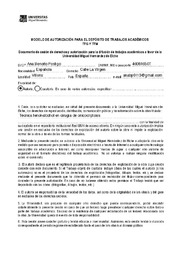Resumen :
La onicocriptosis, o uña encarnada, es la penetración de los bordes de la uña en el tejido periungueal,
causando dolor e infección. Esta patología se ve de manera habitual en consulta, especialmente en
jóvenes, su etiología es multifactorial pero favorece dicha afección un mal corte ungueal y el uso de
calzado estrecho . Otto Boll introdujo la técnica fenol-alcohol en 1943, dicha técnica consiste en la
avulsión parcial de la uña y la aplicación de fenol para realizar una matricectomía química. Esta
Técnica es efectiva, con una tasa de recurrencia del 1,1% y su objetivo es preservar la funcionalidad
ungueal, corregir deformidades, y reducir el dolor.
El procedimiento incluye un corte preciso de la uña, aplicación de fenol, y cuidados postoperatorios
específicos. Es una técnica quirúrgica con un bajo índice de recidivas y un postoperatorio indoloro,
aunque puede alargar la cicatrización y presenta riesgos de quemaduras químicas. El protocolo
postoperatorio garantiza una cicatrización adecuada y rápida recuperación del paciente.
El objetivo de este estudio es explicar la técnica quirúrgica fenol-alcohol para tratar la onicocriptosis
y contrastar con otros métodos.
Métodos: se realizó una búsqueda bibliográfica en las bases de datos Scopus, Web of Science y
Pubmed. Se llevó a cabo la selección de artículos cumpliendo los criterios de inclusión.
Resultados: se revisaron un total de 8 artículos que analizan la efectividad del fenol en el tratamiento
de la onicocriptosis, el tiempo de aplicación, comparaciones con otras técnicas y diversas
innovaciones en el manejo de esta patología.
Conclusiones: La técnica de fenol-alcohol es altamente efectiva para el tratamiento de la
onicocriptosis, reduciendo recidivas y controlando el dolor postoperatorio. Aunque puede prolongar la
cicatrización y el dolor, su capacidad para prevenir reapariciones es destacable. La duración de la
aplicación del fenol es
Onychocryptosis, or ingrown toenail, is the penetration of the edges of the nail into the periungual
tissue, causing pain and infection. Thispathologyis commonly seen in consultations, especially in
young people, its etiology is multifactorial but favors abad nail cut and the use of narrow shoes. Otto
Bollintroduced the phenol-alcohol technique in 1943, thistechnique consists of partial avulsion of the
nail and the application of phenol to performa chemical matricectomy. This Technique Is Effective,
with recurrence rate of 1.1% and aims to preserve nail functionality, correct deformities, and reduce
pain. The Procedure includes precise cutting of the nail, application of phenol, and specific
post-operative care. It is a surgical technique with alow rate of recurrence and a painless postoperative
period, although it can lengthen healing and poses risks of chemical burns. The Post-operative
protocol ensures proper healing and rapid recovery of the patient.
The aim of this study is explain the phenol-alcohol surgical technique to treat onychocryptosis and to
contrast it with other methods.
Methods: A literature search was conducted in the Scopus, Web of Science And Pubmed databases.
Articles were selected in compliance with the inclusion criteria.
Results:A Total Of 8 articles were reviewed that analyze the effectiveness of phenol in treatment of
onychocryptosis, the time of application, comparisons with other techniques and various innovations
in the management of this pathology.
Conclusions: The phenol-alcohol technique highly effective for the treatment of onychocryptosis,
reducing recurrences and controlling postoperative pain. Although It Can Prolong Healing And
pain, its ability to prevent recurrences is remarkable. The Duration Of phenol application is crucial to
balance results and side effects. Although there are risks of complications, careful management can
mitigate them. Insummary, this technique offers an effective combination to address onychocryptosis.
|

 La licencia se describe como: Atribución-NonComercial-NoDerivada 4.0 Internacional.
La licencia se describe como: Atribución-NonComercial-NoDerivada 4.0 Internacional.
.png)